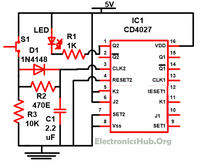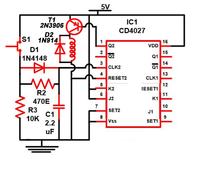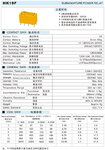msenkpiel
Newbie level 4


I am using the above schematic for a JK Flip Flop circuit. It works fine with the LED, but I need it to actuate a relay. When I try to replace the LED with a relay, it doesn't energize the coil. If I energize the coil with 5v from the power supply, it energizes, but 5v at pin1 of the IC doesn't.
From posts here, I have gathered that I probably need a transistor to get the right current for the relay coil, but I would like to understand the theory of why it works with the LED, but not the relay, what the transistor does to fix this, etc.
I am trying to use this 5v relay that has a coil resistance of 122 ohms:https://www.amazon.com/gp/product/B008MPKBZY?psc=1&redirect=true&ref_=oh_aui_detailpage_o01_s01
Thanks for the help!








